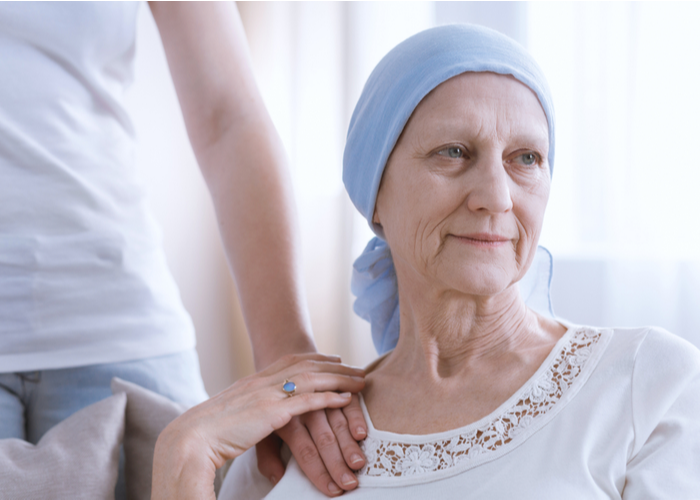
Although primary bone cancer is rare, secondary bone cancer affects thousands of Australians every year. Here, we find out what bone cancer is, and the research being done to change the outlook for patients everywhere.
Bone cancer can refer to primary bone cancer, which begins in the bones, or secondary bone cancer, which is a cancer that started elsewhere in the body and has spread to the bones.
Every year, over 250 people in Australia are diagnosed with primary bone cancer, and close to 100 people die from the disease.
There are a number of different types of primary bone cancer, or ‘bone sarcoma’, the most common being osteosarcoma (beginning in cells that form the bones), chondrosarcoma (beginning in the bone cartilage), and Ewing's sarcoma (more commonly found in children and young adults, and affecting cells in the bone or soft tissue).
Risk Factors for Bone Cancer
Bone cancer is rare, but can affect men, women and children. Risk factors include:
- Previous exposure to radiotherapy or chemotherapy, particularly high doses at a young age
- Other bone conditions such as Paget's disease
- Genetic predisposition, such as inherited conditions like Li-Fraumeni syndrome, or a strong family history of sarcoma, retinoblastoma and other cancers
Symptoms of Bone Cancer
Symptoms of bone cancer vary, but may include:
- Pain in the bones and joints
- Swelling in the affected area
- Stiffness, tenderness or a bruised sensation
- Issues with movement
- Weight loss
- Bone fractures and breaks
- Loss of feeling in the affected area
- Fatigue
Experiencing any of the above symptoms doesn’t necessarily mean you have bone cancer. However, it is important you discuss these with your GP , who may then refer you for blood tests .
If necessary, your medical team may then consider x-rays, CT or MRI scans and/or a biopsy in order to carry out a full diagnosis.
How is Bone Cancer Treated?
Primary bone cancer is usually treated with surgery, chemotherapy, radiotherapy or a combination of these treatments. This will vary depending on the size of the tumour, and how far it has spread.
Surgery to remove the affected part of the bone is the most common type of surgery for bone cancer. The bone that is removed is replaced with either an implant or a bone graft, using a healthy part of bone from another part of the body or from a donor.
If the cancer has spread too far, it may be necessary to amputate the limb, although this is becoming less common.
Chemotherapy and radiotherapy may also be used to destroy or damage the cancer cells, either shrinking the tumour before surgery or to kill any cancer cells left behind. Prognosis will vary depending on the type of bone cancer, the rate of tumour growth, as well as age, fitness and medical history.
Research into Bone Cancers
Dr Mark Pinese: identifying Risk Factors for Sarcoma
A Senior Research Officer at the Garvan Institute of Medical Research and the lead analyst for the Medical Genome Reference Bank, former Cure Cancer grant recipient Dr Mark Pinese conducts research into the genetic basis of sarcoma risk.
A key focus of Dr Pinese’s research is the identification of genes and genetic features that affect a person’s chances of getting sarcoma, using the information to help develop a method to predict the risk throughout life.
‘From studying identical twins who have almost identical DNA, scientists know that genes have a significant influence on the risk of acquiring cancer,’ says Mark. ‘But actually identifying the genes responsible and how they work together has been very difficult.’
‘We do know some genes that control cancer risk, but these only explain a tiny fraction of cancers,’ he says. ‘My research aims to identify more genetic factors that determine the risk. The ultimate goal is to create a way to accurately identify people at high risk of getting cancer, for surveillance, early treatment – and hopefully cure.’
Mark feels strongly that he should be focusing his attention on prevention and early diagnosis as opposed to cancer treatment, where too often doctors and patients fight a losing battle. ‘A cancer that’s diagnosed early has the best chance of a cure. How do we diagnose cancer sooner? Through better understanding risk.’
Mark is supported through the Priority-driven Cancer Support Scheme by the Cure Cancer Australia Community.
Dr Nathalie Bock: The Quest for a Bone Cancer Cure
2020 Cure Cancer grant recipient Dr Nathalie Bock, a researcher at The Institute of Health and Biomedical Innovation at the Queensland University of Technology, is looking to understand how and why cancers such as advanced breast and prostate cancer metastasise to and thrive in the bones, presenting, to date, with no cure.
She and her fellow researchers at QUT want to propose new and better ways of assessing prostate cancer when it has spread to bones. ‘This may help us find new contributors to cancer within the bone, and thus help unravel therapies that can one day be curative instead of palliative,’ she explains.
Promising results of her work so far include the creation of a live bone tissue mimic in 3D in the laboratory. It has been used to study prostate cancer behaviour in a more relevant way compared with traditional two-dimensional methods.
The people who inspire Dr Nathalie Bock have always been the patients. ‘Their resilience and fight for survival motivate me to put the same strength into my research, fighting on their behalf, to cure them one day,’ says Nathalie, ‘Cancer patients should stay hopeful because hope can do miracles,’ she continues. ‘Donors must know their time, effort and contribution is the most invaluable gesture they can make to help one day find a cure. A little can truly makes an incredible difference.’
Nathalie’s grant is co-funded with Cure Cancer, Cancer Australia and 66% by our principal supporter, the Can Too Foundation .
To ensure vital research into bone cancers can continue, make a donation to Cure Cancer today:
Resources: